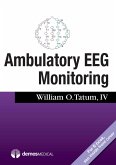Gerald Ulrich, MD provides an authoritative, advanced guide to theory-based EEG interpretation that is grounded in the Berlin Psychiatry School Model of EEG-Vigilance. The Berlin model is not well known in the United States. Instead, EEG is dominated by data-driven Q-EEG where one looks at mathematical correlations without a coherent theory to guide interpretation. This is the first known published book on this topic. Dr. Ulrich's aim is to help the reader increase self-confidence in EEG assessment in clinical practice or research and to facilitate more reliable and valid EEG interpretations. He provides a skilled synthesis of decades of EEG research alongside his expert insights from his 40 years of clinical experience and research with EEG. The reader will learn how to visually discern spatio-temporal patterns with 132 high-quality examples of EEG images - the majority within the course of spontaneous resting EEGs. Additionally, the EEG-pathology of psychiatric syndromes and the impact of common psychotropic medications on the EEG are described in detail. Another important contribution is the identification of a common type of biological artifact which has gone unnoticed in research that is likely responsible for the unsatisfactory test-retest reliability and questionable validity of the EEG; the author proposes a simple solution to this vexing artifact problem. In the second part of the book, the reader is introduced to novel QEEG procedures, especially related to EEG dynamics, which can be regarded as meaningful within the theory of EEG-vigilance.








